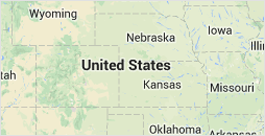Barry Kinson
PHONE NUMBER : --------------------
Map

Be Limitless With The Wireless Broadband Services
Broadband is a term used to define high speed internet access that is always available. There are certain networks that make use of cable modems or standard cable television infrastructure. Such networks are known as broadbands and they facilitate internet access to multiple users at the same time. Broadband includes several high speed transmission technologies such as: Digital Subscriber Line (DSL), cable modem, fiber, wireless, satellite and Broadband over Powerlines(BPL). Certain factors need to be considered while choosing the broadband technology. The factors which require due consideration are: your location, whether in urban or rural area, price and availability. The broadband plans can now be customised in terms of your usage of data, monthly charges, internet speed you need etc. in accordance with your requirements. Such a flexibility has made the internet an essential component of every house and office.
Wireless broadband internet providesinternet connectivity to a home or office by using a radio link between the location of the customer and the service provider's facility. Wireless broadband can wither be fixed or mobile. Fixed wireless broadband provides internet access to the consumers from a fixed point and require a direct line of sight between the wireless transmitter and the receiver. Whereas mobile wireless broadband internet services can be availed without having to stand at a fixed point. Such broadband services are now also being offered by the mobile telephone service providers. This technology is appropriate for highly mobile customers. Wireless broadband is a more cost effective option in remote or sparsely populated areas as DSL or cable modem might be costly.
Author Resource:
This article is written by Barry Kinson. He has got into writing professionally and uploads regular informative articles. You can find his latest thoughts at fixed wireless internet blog. Check out this site for more information about finding a fixed wireless broadband service.
